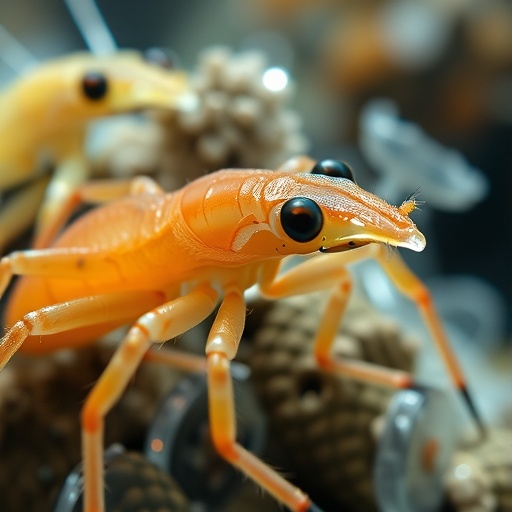The Gulf of Mexico is facing a mounting environmental crisis as microplastic pollution intensifies, threatening critical wildlife habitats and raising alarming implications for human health and global food security. A groundbreaking study published in npj Ocean Sustainability employs state-of-the-art numerical modeling techniques to unravel the complex dynamics of microplastic dispersion in coastal waters off the southern United States, revealing rivers as the primary conduit of plastic pollutants rather than urban wastewater treatment plants.
Microplastics, defined as plastic particles less than five millimeters in size, have proliferated in marine environments worldwide. However, their behavior in semi-enclosed coastal regions like the northern Gulf of Mexico remains poorly understood due to the complexities of ocean currents, sediment interaction, and varying plastic properties. This latest research, co-authored by Annalisa Bracco of the Euro-Mediterranean Center on Climate Change (CMCC), leverages advanced computational simulations to track the trajectories and fate of various microplastics over three consecutive years, providing unprecedented spatial and temporal resolution.
The computational framework integrates hydrodynamic models with particle tracking algorithms to simulate microplastic movement on timescales of approximately one month, capturing seasonal and episodic variability. By differentiating plastics by size, density, and buoyancy, the study elucidates distinct transport mechanisms. For instance, heavier microplastic particles tend to sink to the ocean floor, accumulating in benthic zones, whereas buoyant particles exhibit remarkable resistance to turbulent wave action, enabling prolonged surface residence times and further horizontal dispersal.
One of the most significant revelations from the modeling efforts challenges prevailing assumptions within the marine pollution community: rivers, rather than wastewater treatment plants, are overwhelmingly responsible for introducing microplastics into the Gulf. By incorporating riverine discharge rates and urban runoff patterns, the researchers demonstrate that land-based inputs via upstream fluvial systems dominate microplastic loading, funneling vast amounts of debris past the Mississippi River Delta and into the northern gulf waters.
This pronounced plastic accumulation forms a concentrated pollution hotspot west of the Mississippi Delta, an area recognized for its ecological importance as a nursery and feeding ground for diverse marine species such as sea turtles, red snapper, and bottlenose dolphins. The implications for these species are severe; microplastics can cause physical harm, toxicological stress, and serve as vectors for chemical contaminants, jeopardizing their survival and reproductive success in these already vulnerable ecosystems.
Beyond ecological concerns, the study underscores the far-reaching consequences for human populations relying heavily on Gulf fisheries. The bioaccumulation of microplastics and associated toxins within commercially important seafood species raises direct public health issues, potentially compromising food safety and security. Such findings offer a compelling narrative to policymakers and the public alike, linking environmental degradation with tangible risks to human well-being.
A novel aspect of this research lies in its integration of species distribution data alongside pollution mapping. By overlaying microplastic concentration hotspots with habitat ranges for key marine organisms, the study produces detailed risk maps pinpointing where plastic exposure overlaps with ecologically sensitive regions, thereby informing conservation priorities and management strategies.
The collaborative nature of the project also highlights the educational and participatory value of involving emerging scientists. A Georgia Tech undergraduate contributed species distribution datasets, exemplifying how interdisciplinary research and mentorship can foster the next generation of environmental scientists equipped to tackle multifaceted ecological crises.
Importantly, the modeling approach transcends mere documentation of pollution patterns. It constitutes a strategic tool capable of identifying precise point sources of contamination, enabling targeted intervention efforts. By pinpointing the riverine origins of microplastic influxes, environmental agencies can implement focused mitigation measures such as upstream waste management reforms and enhanced land-use policies to curb plastic runoff.
This research initiative exemplifies the broader potential of climate and environmental modeling in bridging the gap between complex scientific phenomena and public engagement. According to Bracco, directly linking pollution data with familiar regional marine species frames the issue in a context that resonates with non-specialist audiences, thereby amplifying societal awareness and motivating collective action to address plastic pollution.
Looking ahead, the study’s methodology sets a precedent for expanding similar analyses to other vulnerable coastal systems worldwide. The CMCC’s Global Coastal Ocean (GOCO) division is poised to replicate and adapt these modeling frameworks to diverse geographies facing analogous challenges, enabling global-scale monitoring and mitigation of microplastic threats.
Ultimately, this comprehensive investigation into microplastic pollution advances the scientific understanding of coastal ecosystem vulnerabilities and delivers practical insights for environmental stewardship. By aligning rigorous computational science with ecological and public health concerns, the study paves the way for informed policy making and proactive conservation efforts aimed at safeguarding marine biodiversity and the communities reliant upon it.
Subject of Research: Not applicable
Article Title: Modeling river and urban related microplastic pollution off the southern United States
News Publication Date: 28-Aug-2025
Web References:
References:
Zhou, X., Xiao, S., Ramirez, M. et al. Modeling river and urban related microplastic pollution off the southern United States. npj Emerg. Contam. 1, 9 (2025).
Keywords: Environmental health




